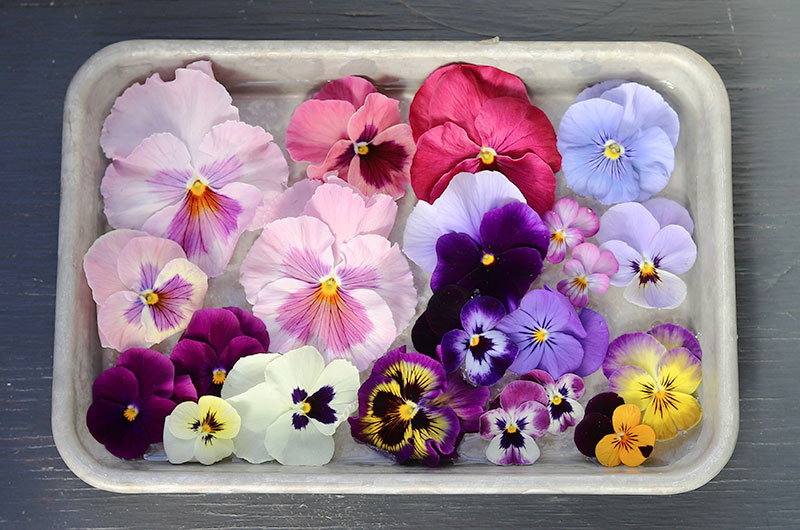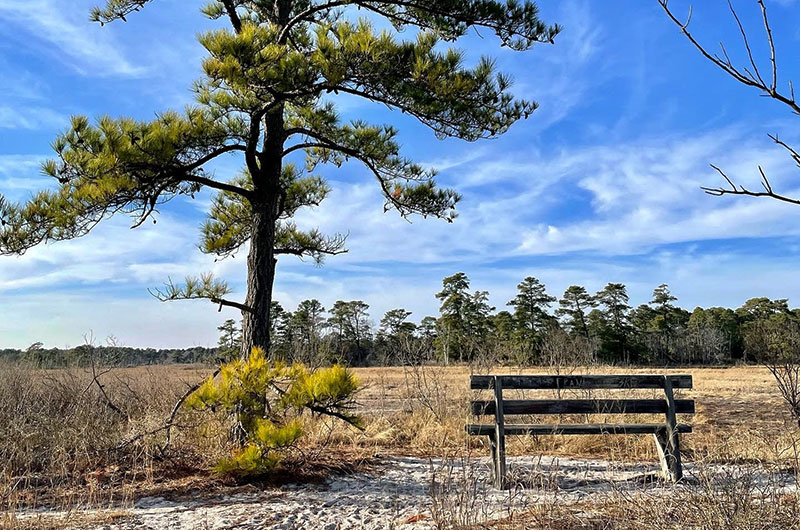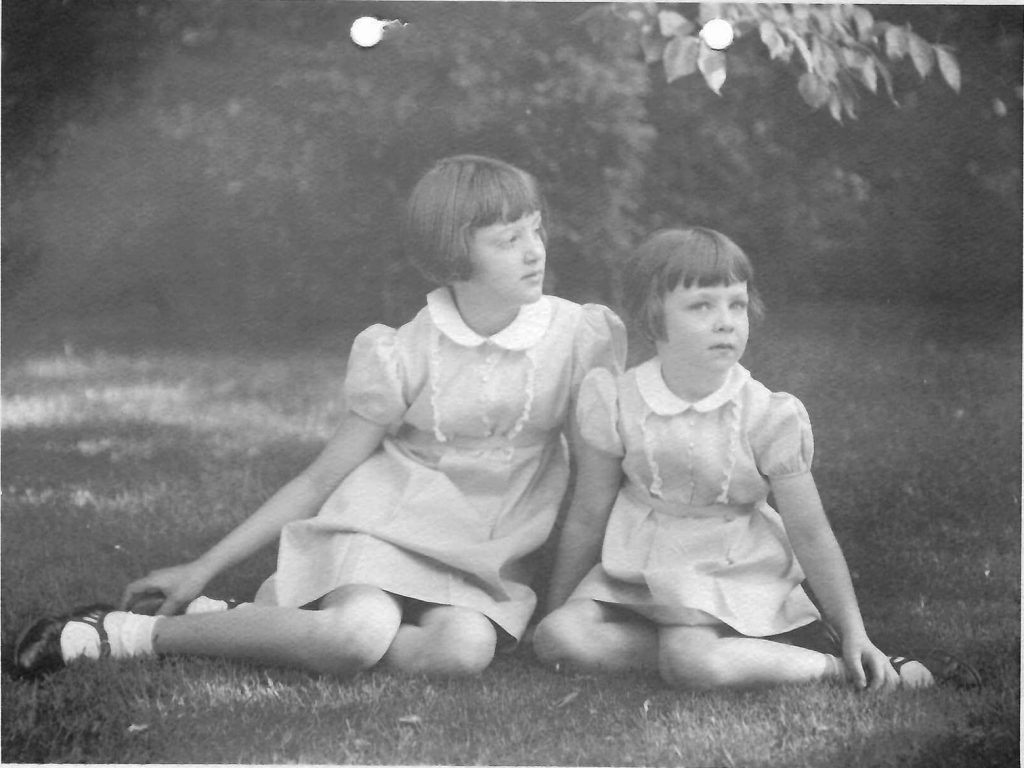
I AM PUSHING a rickety garden cart through Pepper’s Greenhouses in Milton, Delaware, following behind my 91-year-old father as I have done in plant nurseries and gardens my entire life.
(Once when I was six, I tagged along on a fancy garden tour, shadowing my Dad so closely that I caught the wrath of a bee’s nest he awakened as he forged ahead of me through a narrow gap in a privet hedge. One sting on my tummy under a loose-fitting summer sleeveless blouse and one on my bare freckled arm earned me a place in his arms for the trip back to the car.)

Today it is cold and drizzly, a maddening reminder of the fickle fate of March vacationers. My husband and I have been luxuriating in the past three days of 60- and 70-degree weather, using our little respite from real life to explore the Delmarva peninsula during the day while visiting with my Dad over coffee in the mornings and family meals in the evenings.

From the wild ponies and windy dunes of Assateague Island to the salt marshes and Loblolly pine barrens of Prime Hook Wildlife Refuge and Cape Henlopen State Park, the hours of walking outdoors have been thoroughly restorative.

Yet the turn in the weather provides a good excuse to go plant-perusing (and shopping) with Dad.

I have filled the top basket in the cart with six-packs of pansies. Pansies were the first flower my Dad let me pick from his gardens when I was young, and I loved to bring them to my teachers at school, my fist nearly crushing the fragile stems wrapped in wet paper towel and aluminum foil before I ever reached the classroom.

Here I spy my favorite Frizzle-Zizzle mix amidst a sea of color. Flats and flats of pansies line the long corridor that connects the maze of greenhouses at Pepper’s, each a domino of treasure: one housing perennials, another annuals; herbs to the left, vegetable seedlings to the right; woody perennials and deciduous shrubs around the corner, fruit trees further on down the line. But the pansies merit a special spot in March — the plant nursery’s equivalent to Easter or Halloween candy in the grocery store.

Some people scoff at pansies, or worse, ignore their ubiquitous presence in early spring, thinking them mundane. But I will always love them and their little viola and johnny-jump-up cousins, especially now that I know how many truly beautiful varieties are available if you look hard enough (or decide to start them from seed).

Curly petals, sweet scents, unusual colors, artful veining and Jackson Pollock blotches – their charms are many. Not to mention their habits: They tolerate the cold, show up early in spring, and bloom profusely as long as you keep picking them ( a win-win). Plus, the petals are edible!

Erin Benzakein at Floret Flower Farm (my flower hero) even grows them as cut flowers, lengthening the stems to up to 15 inches by growing them under row cover. I might try that. But even without long stems, the shorties make long-lasting posies in a creamer or small glass jar.

Dad and I have come to a crossroads. To the right is the hellebore and snowdrop greenhouse. To the left is a wooden door leading out to a small yard filled with dogwoods. I follow Dad out to the dogwoods and the drizzle, my cart rattling now with a ceramic flower vase I’ve nabbed as we passed through the vast houseplant wing. The owner of Pepper’s stops to greet Dad, who is a frequent visitor. Everyone knows him there and treats him warmly.
Theoretically we are just browsing, but as Dad begins to tell me about the merits of this and that dogwood (his current favorite is Appalachian Spring), I start looking at the tags on the Kousa dogwoods (Cornus kousa), the pretty Chinese dogwoods that are less susceptible to the anthracnose disease that has attacked and killed many native dogwoods (Cornus florida). Dad mentions he has been looking for a Kousa called “North Pole” as a possible replacement for the Japanese maple at my mother’s grave. I bend down and look at all the tags, moving pots around on the puddly tarmac to peer in. But no North Pole. We turn to leave and I notice a handsome dogwood set aside on a bench with a “sold” sign on it. Dad asks me what the variety name is on the tag, and I report that it’s a “Snow Tower.”
“That’s it!” He says excitedly, laughing, realizing that in trying to recall the name of the variety he’d read about, he’d settled on North Pole when really the name was Snow Tower. Quickly I see that he is disappointed though, as this one is sold. I tell him I’m sure that I’ve seen another Snow Tower in all the tags I looked at a few minutes ago. I go back into the sea of pots and soon we have three Snow Towers to look at. We debate the merits of each and discuss how each might be pruned, finally choosing our favorite. I tell Dad I would like to buy it as my contribution to the gravesite landscaping (Mom is in with a bunch of other relatives!), and soon we are stuffing it, along with the pansies, some Thai Basil, the flower vase, and a few bottles of deer repellent (for me, cheaper in Delaware than on the Island) into the car.
Not our biggest haul ever, but a good day. A stop at the Food Lion to pick up a can of baked beans to go with the BBQ pork Dad has in the slow-cooker for dinner, and we’re home.

This is a day I want to bottle up and bring back to the Vineyard with me along with the pansies. Is that possible? Can you carry over the good feelings from one day, one week, to the next? I wonder, can you actually bank the comfort and joy of these days, storing them up to fall back on when you need them, here on the sharp side of reality where pure evil looms?
I think so.

One morning in Delaware I toppled out of bed early, grabbed my coffee, and found a quiet nook to squinch up my knees, rest my laptop on my pajamas, and dial into a virtual meeting of my fellow travelers in sobriety. One of the first things I heard that came bounding through the fog of sleepiness was the phrase “spiritual armor.” I smiled at that and knew right away what the speaker was referring to – the idea that all the work we do on a daily basis (from doing the next right thing to letting go, from praying to forgiving, from checking our motives to practicing acceptance) makes us better able to handle the wonky stuff when it threatens to throw us off the beam.

There is such a thing as building up a spiritual reserve, keeping our spiritual muscles flexed. Not only has this idea been hammered into me, but I’ve experienced the benefits of it again and again.
In the same way, I’m using those days in Delaware – both the relaxed time spent in nature with my husband and the precious time spent with my Dad, as well as my sister – as a deep well of comfort right now. Dipping into that well is a tool, a deliberate practice of gratitude, that feels especially important to use right now. I (like all of us) must focus my energy on what’s good and delightful and joyous in life — or despair, as Wendell Berry says in The Peace of Wild Things (below), will grow in me, and in us all.

The Peace of Wild Things
When despair for the world grows in me
and I wake in the night at the least sound
in fear of what my life and my children’s lives may be,
I go and lie down where the wood drake
rests in his beauty on the water, and the great heron feeds.
I come into the peace of wild things
who do not tax their lives with forethought
of grief. I come into the presence of still water.
And I feel above me the day-blind stars
waiting with their light. For a time
I rest in the grace of the world, and am free.
— Wendell Berry

LOOKING FOR RECIPES?
Visit cookthevineyard.com and sign up for the free weekly newsletter. (Something I do as part of my day job.)







